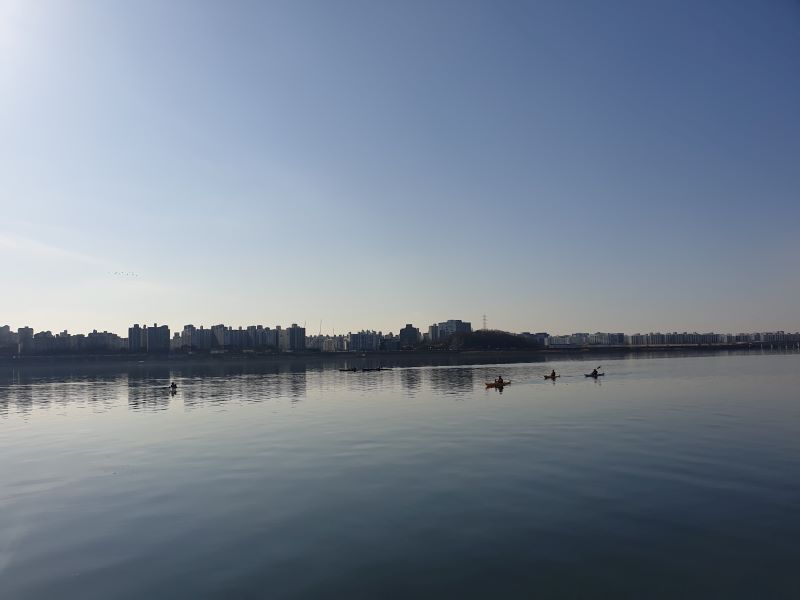Let’s discuss the colors of fishing kayaks. There are some very cool looking color combinations out there, in some areas it is almost a competition to see who could get the best looking yak.
In this post, I will also include plenty of photos of my kayaks. While not many of them are fishing kayaks, I included the kayaks to demonstrate how visible various colors are.
Why color matters.
There is more to a kayak color than simply looking good. There are also very important safety considerations. It must be remembered, that kayaks are a lake’s version of speed bumps. They sit low in the water, and a distracted boat driver or one relying too heavily on autopilot can easily miss them a kayak when visibility is poor. While not common, collisions do happen.
Visibility is also important, during search and rescue operations. Kayaks are just a few feet of plastic, floating sometimes in many thousands of acres of water. They are extremely difficult to see from the cockpit of a rescue helicopter.
What is the best color for a fishing kayak?
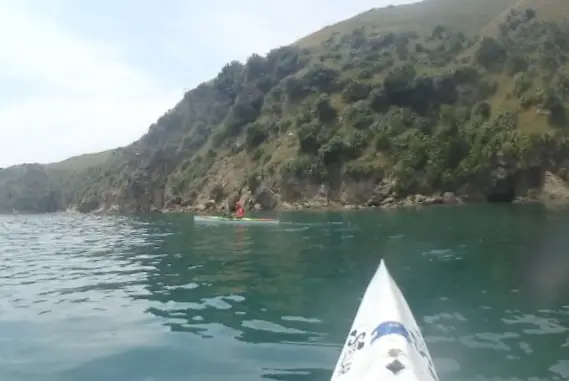
The most visible color for a fishing kayak is fluorescent green or hi-vis orange. These colors allow for maximum contrast allowing them to stand out against the darkness of the water. Bright yellow is less visible but still generally acceptable. Bright red is the less visible of the recommended safety colors, and can be particularly hard to see in low light conditions.
The more visible a color the better, so colors like fluorescent ‘radioactive’ green and hi-vest orange and bright yellow are very popular from a safety perspective. These are also the colors routinely used for safety equipment. They stand out against the darkness of the water, and remind visible in most light conditions.
I will also note that everyones eyes are different, and while fluroescent green is supposedly the most visible color on the water, my eyes must be strange. I have a much easier time seeing bright orange. At times, I also feel bright green, kind blend in somewhat with spring vegetation.
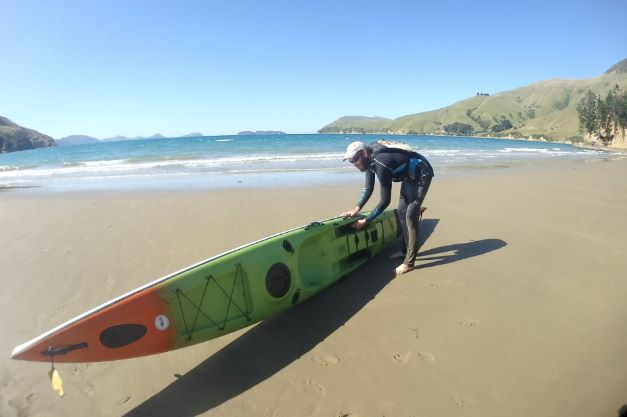
I will now cover a few other colors.
White is a very popular hull color for some fibreglass kayaks, while it does contrast nicely against a dark sea they do tend to dissapear among breaking waves. Making them difficult to see in rough water conditons. White can also be hard to see against glare on the water surface. A white kayak, is not exactly a safe kayak.
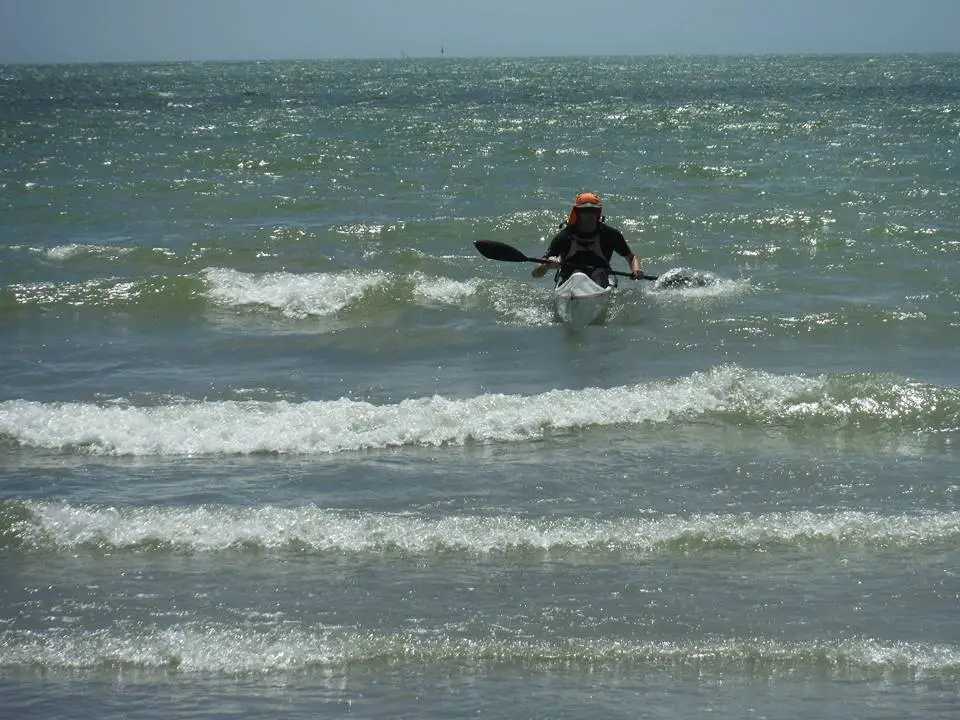
Red is an interesting one, in some ways it is very visble. But it can be difficult to see in low light conditions.
Then we have colors like Blue, Dark Green, and various shades of camouflage. From a safety perspective they are terrible. They blend in with the water or with the surroundings. I must admit, I ignore my own advice and I often paddle a dark green kayak. Not only does it blend in with the water, it also blends in with the surrounding vegetation.
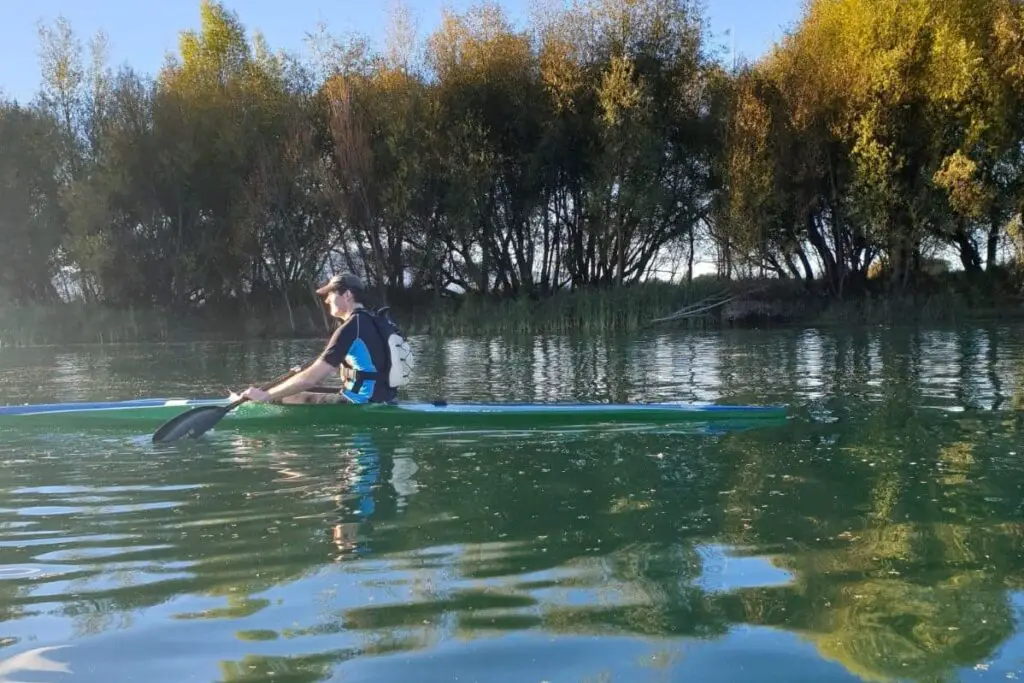
Solid colors are also better than split colors
Having a kayak one solid kayak is a lot more visible than having the deck one color and the hull another. These split-color kayaks do look cool, but it makes them much harder to see on the water.
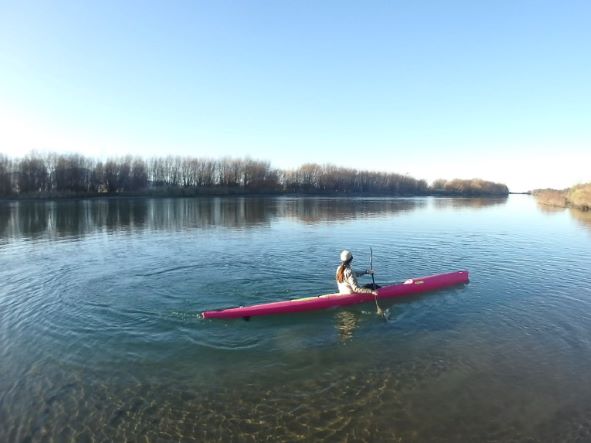
How to improve visibility when out on the water
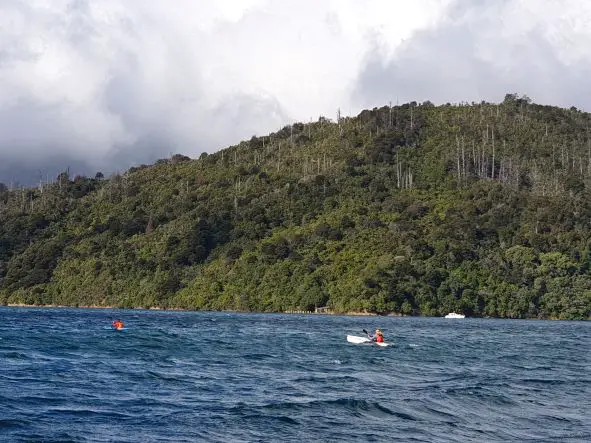
There are some easy ways to quickly improve visibility, my favorite is to wear a bright color hat. Our head is the highest point in a kayak, and a bright orange hat can be seen from miles away. Only downside to a bright hat, is that it can easily be lost during a capsize.
Secondarily. A bright PFD or lifejacket can really make a paddler stand-out, and because they are attached to our body they remind with us even if separated from our boat. As I write this, I look down at my brown fishing PFD… Oops.
Also, replace your PFD when it becomes sun faded, do not be like me and keep using them well passed their expected life exptancy.
Thirdly, some paddlers like to fly an orange flag on a long pole. Again, this is a great option because it gets high above the waterline increasing visibility.
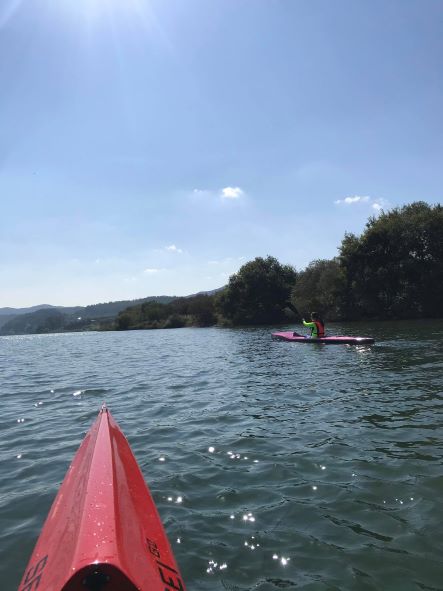
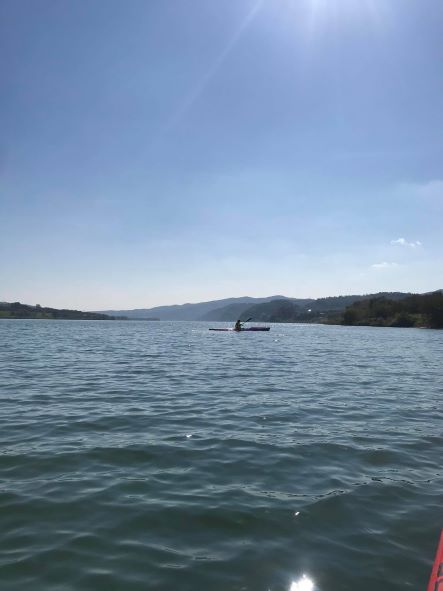
Visibility at night
When paddling at night, it is important to have multiple sources of light. But first, check your local regulations to see what lighting requirements there are.
In addition to any deck lights, I always bring a bright headlamp, I leave it off most of the time, but if I see a boat heading in my direction, I can turn it on to alert them of my presence.
Although, sometimes this backfires, with concerned boat drivers heading over to see if you are okay. It is a bit scary having a boat zoom towards you in the dark.
If doing a lot of night fishing, it is also worth investing in a strobe light that can be secured to the deck.
Paddles are surprisnigly visible.
One method I quite often use to find other paddlers out on the water is to look for the flash of their paddle. I often detect the movement of the paddle through the air before the paddler themselves.
If they are in a pedal, or electric kayak they are going to be somewhat harder to see. Just have to look for their silhouette, and hope they are wearing a bright hat or using a flag.
Does a bright color kayak scare fish?
As someone who has been fishing from a bright yellow banana kayak for the best part of 20 years. Fish do not care about the color of our boats. I have lost count of the number of wild brown trout I have caught from mine.
What fish do care about is sudden unexpected movement heading in their direction. A stationary kayak is little threat to them. One moving quickly represents immediate danger.
I also will note, if you paddle directly over fish in shallow water, the shadow from the hull will spook them no matter the color.
How about a hunting kayak?
I mean, duck hunters go to a lot of effort to camouflage their hides and blend in with the environment. Waterfowl also have keen eyesight and know when something is wrong.
So this is one situation, where a camo pattern might be helpful. Alternatively, hide your kayak under camo-netting.
So, I accept. Duck hunters, probably have a legitimate need for low-visibility colors. Just

